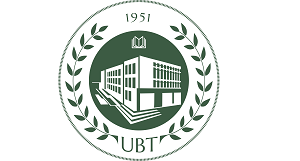1Université de Lorraine, UMR 7359 CNRS, CREGU, GeoRessources Laboratory, 2, rue du doyen Roubault, BP 10162, 54505 Vandoeuvre-lès-Nancy, France
2Agriculture University of Tirana, Faculty of Agriculture and Environment, 1029, Tirana, Albania
*Corresponding author e-mail: ndue.kanari@univ-lorraine.fr
Abstract:
Extraction of several non-ferrous metals generates large amounts of solid wastes leading to a serious environmental threat, causing significant and lasting damage to flora and fauna. With the tight environmental regulations and embracing the concept of the “sustainable development” in the environmental strategy, research centers in collaboration with industrial sectors have to develop new approaches for the treatment of the already generated and stored wastes. The aim of this work is to chemically transform this ironbased wastes into green, sustainable and high added value materials having iron in hexavalent state Fe(VI), known as alkali ferrates [(Na, K)2FeVIO4] and appreciated for their strong oxidation capacity and multifunctional properties. The experimental tests consist of simultaneous reactions of two solids (hydrated ferrous sulphate and alkali hydroxide) and one gaseous oxidant (diluted chlorine) at room temperature. Scanning electron microscope (SEM), X-ray diffraction (XRD) and chemical analyses are used to determine the composition of the starting samples and the solid reaction products. The oxidation state of iron [Fe(II), Fe(III) and Fe(VI)] is mostly determined by Mössbauer spectroscopy (MS) technique. The effects of several parameters on the transformation yield of Fe(II) into Fe(VI) are systematically investigated in order to optimize the synthesis process. A comparison of ferrates preparation process developed here, with principles of the “green chemistry” suggests that numerous points such as: prevention, atom economy, less hazardous chemical synthesis, design for energy efficiency, lead to consider this process as “green chemistry” and the obtained ferrates as environmentally friendly oxidants.
Keywords: industrial waste, ferrates synthesis, green oxidant.

